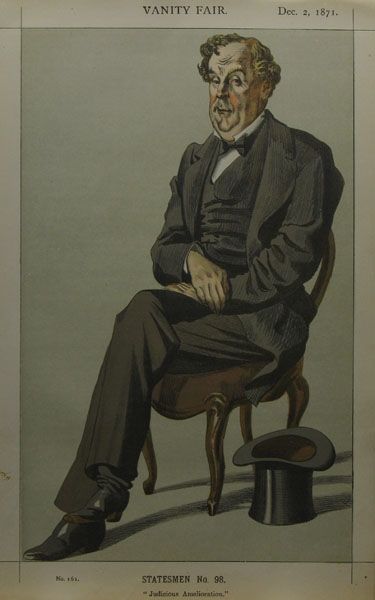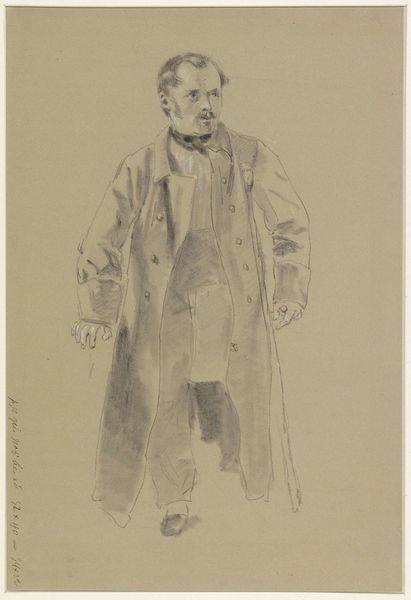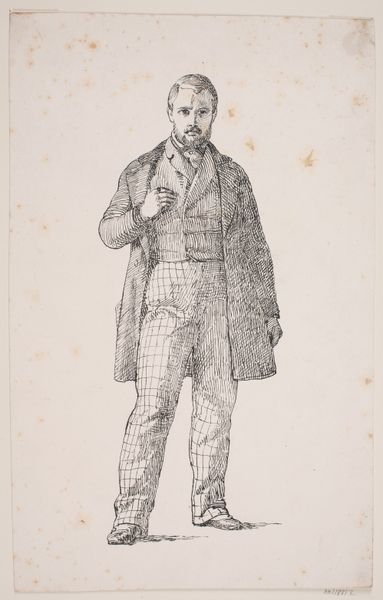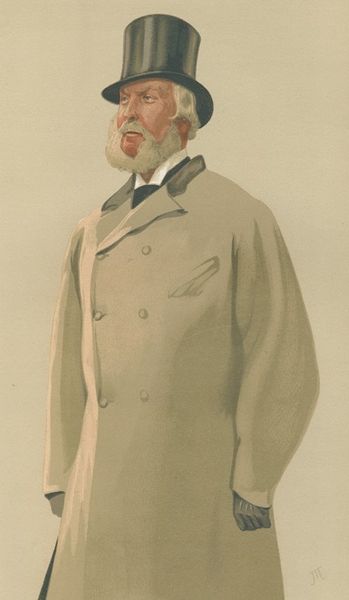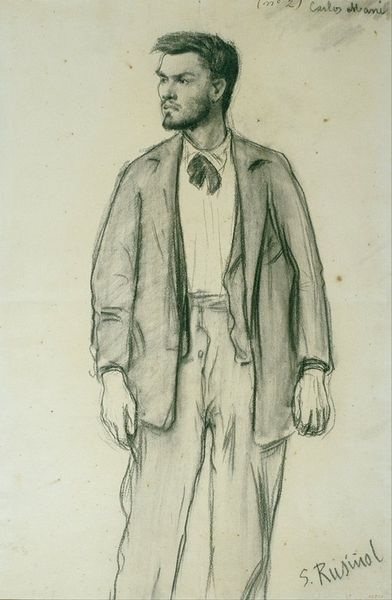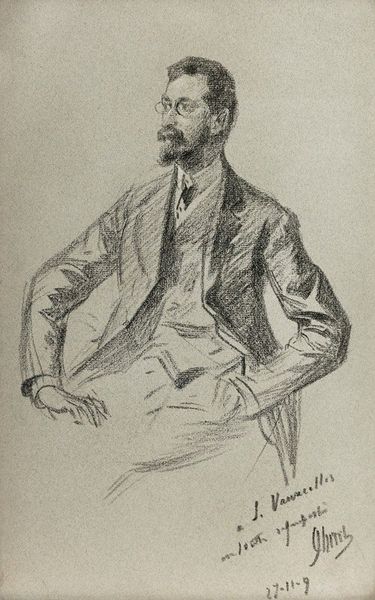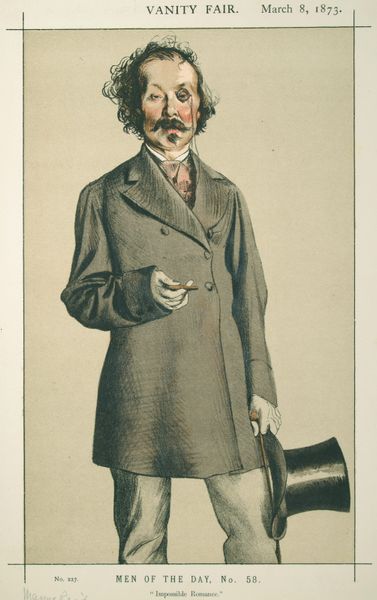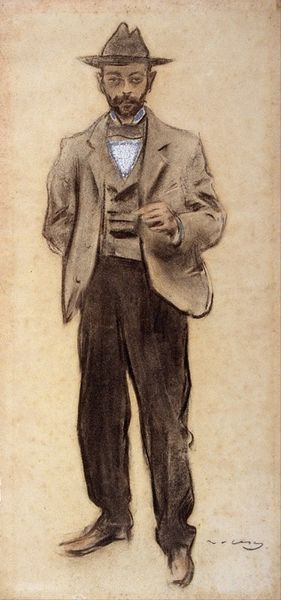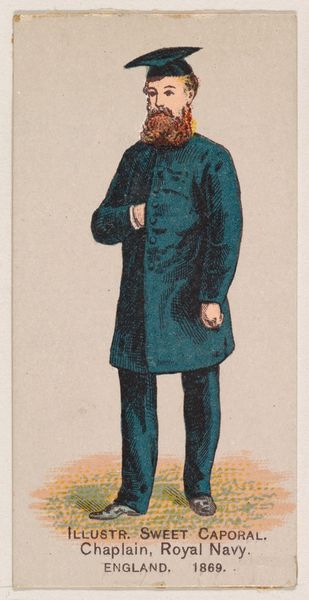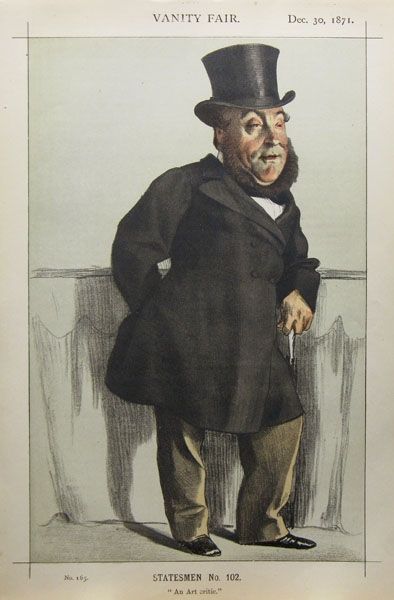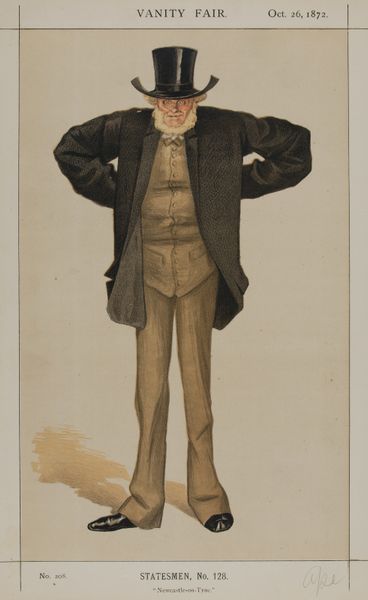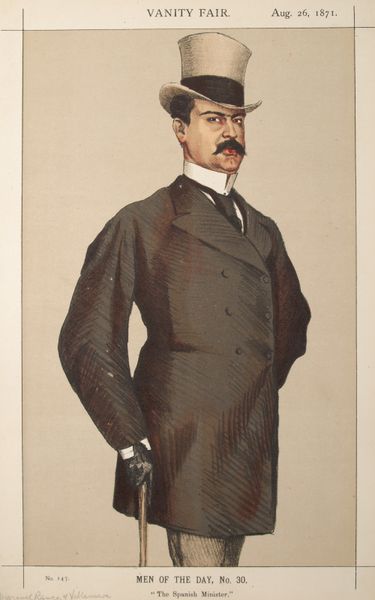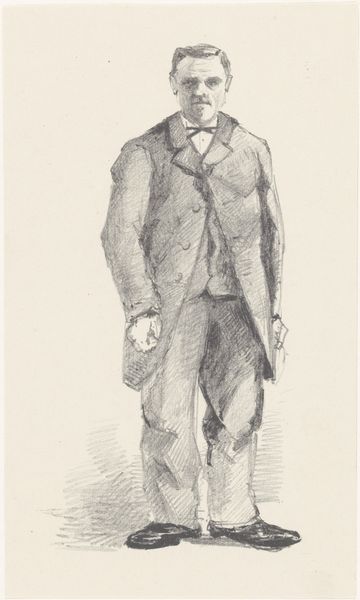
Statesman No.097° - Caricature of Sir Charles Wentworth Dilke, 2nd Baronet PC 1871
0:00
0:00
drawing, print, engraving
#
portrait
#
drawing
#
portrait image
# print
#
caricature
#
caricature
#
charcoal drawing
#
engraving
Copyright: Public domain
Editor: This is "Statesman No. 097° - Caricature of Sir Charles Wentworth Dilke, 2nd Baronet PC" by James Tissot, created in 1871. It appears to be a print or engraving. I'm struck by the figure's somewhat awkward posture and almost furtive gaze. How might we interpret this depiction of a statesman, and what's the context? Curator: This image speaks volumes about the visual culture of political satire in the late 19th century. Vanity Fair was renowned for its caricatures. Notice the exaggerated features and slightly unflattering stance; these were tools used to shape public perception of figures like Sir Charles Dilke, who was known for his radical politics. Consider how the artist uses visual cues to either support or undermine Dilke's public image. Editor: So, it’s not just a funny picture, but a deliberate attempt to influence opinion? What do you mean by undermine? Curator: Exactly. The print is presented under the "Statesmen" banner, which is already quite a loaded term. Then the inscription reads: "A far advanced radical". It's important to unpack who the audience was for Vanity Fair. Was this designed to reassure or scare the largely aristocratic and upper-middle-class readership? How does the title, "Statesman", function here - is it honoring or critiquing? Editor: I hadn't considered how the magazine's audience would interpret the "radical" label. Curator: Think about the anxieties of the time – the rise of democratic movements, challenges to the established order. Caricatures like this played a significant role in framing these anxieties. Also notice that his hands are hidden behind his back: What message does this pose convey to the observer? Does it create any impressions in the viewer’s eyes, positive or negative? Editor: This caricature is more complex than I initially thought. I'm beginning to see how deeply ingrained political commentary was within seemingly simple images. Curator: Precisely! It prompts us to consider the complex interplay between art, politics, and public opinion. Editor: Thank you. That gives me much to think about regarding art as a social mirror.
Comments
No comments
Be the first to comment and join the conversation on the ultimate creative platform.
